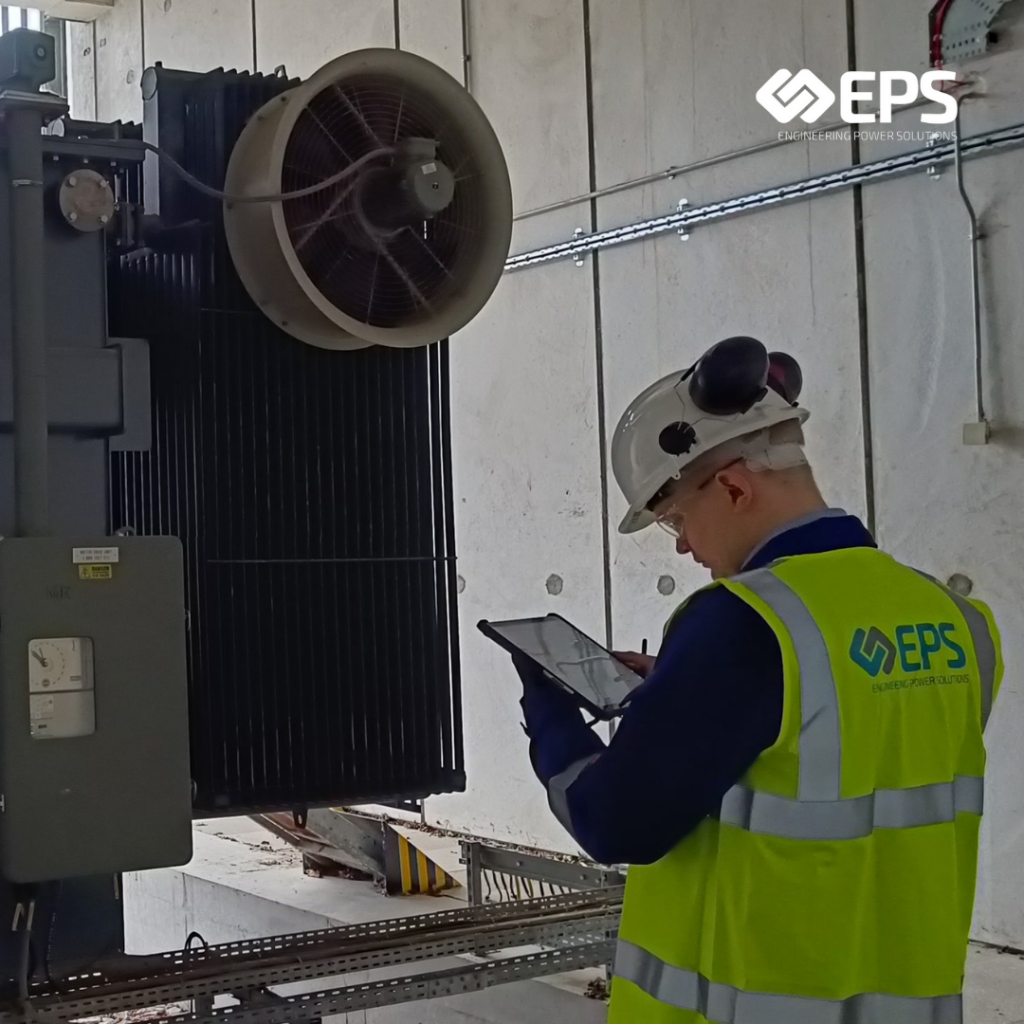Transformers are essential components within power systems, and they play a pivotal role in adjusting voltage levels for the efficient transmission of electricity – during energisation, transformers can experience a brief, high-level surge of electrical current.
Power system studies provide invaluable insights into network performance, helping to optimise reliability, stability, and efficiency -specifically, energisation studies enable engineers to identify and address potential performance issues caused by inrush current.
In this article, we’ll explore the causes of transformer inrush current, how it can affect your electrical infrastructure, and the importance of energisation studies in mitigating these risks and remaining compliant.

Exploring the Causes of Transformer Inrush Current
Understanding the causes of these surges is pivotal for effective management and prevention of potential issues in power systems.
Factors that contribute to transformer inrush current include:
- Initial Magnetisation: When a transformer is energised, the initial absence of magnetic flux in the core triggers a surge in current as it establishes the magnetic field.
- Core Saturation: Due to the non-linear relationship between magnetic flux and applied voltage, saturation of the transformer core during energisation can cause a sharp increase in current.
- Residual Flux: When a transformer is re-energised, residual magnetic flux from the previous de-energisation may generate a further spike in current.
- Core Characteristics: Inrush current can be caused by core material and design. Cores with higher permeability can face more severe surges attributed to the quick build-up of magnetic flux.
- Transformer Size: Appropriate size and design choices are vital to dealing with transformer inrush current. Larger transformers with more substantial winding capacitance are susceptible to higher inrush currents.
Now that we’ve explored these, let’s examine how they can impact your electrical infrastructure.
Effects of Transformer Inrush Current
Inrush current can have significant repercussions on your assets, including:
Harmonics
When energising transformers, harmonics may emerge, causing a cascade of issues which range from circuit component failures to reduced operational lifespan of the transformers. In extreme cases, harmonics cause irreversible damage, reinforcing the importance of adeptly managing these incidents – The harmonics of concern are typically low order, dominated by the 2nd through the 5th harmonics. The inrush current during energisation can be full of both even and odd harmonic components, which can excite system resonances and result in dynamic overvoltages, potentially causing various problems such as surge suppressor overheating, capacitor failures, or misoperation use of electronic equipment.
Disruptive Noises
Noises resembling a humming or buzzing sound can occur from the sudden magnetisation of the transformer core during energisation.
Equipment Stress and Downtime
These sudden bursts of power can strain electrical equipment, potentially causing damage and quicker wear and tear, leading to operational downtime for repairs.
Tripping of Protective Devices
Surges in current may cause protective devices to trip unexpectedly, resulting in power outages.
Voltage Dips and Interruptions
When a sudden increase in the flow of electricity occurs, your power supply can experience drops in voltage and interruptions, affecting how connected devices operate.
Grid Code Compliance
Surges in current can impact the stability of the electrical grid. They have the potential to surpass limits outlined in the electrical standard P28 and Grid Code (GCOO76), undermining the reliability of your electrical infrastructure.
The side effects of this phenomenon reinforce the need for the effective management of transformer inrush current. A comprehensive approach is required to maintain the performance and stability of your power systems.
Managing Inrush Current with Energisation Studies
Energisation Studies focus on this initial start-up of electrical components such as transformers and motors for the first time. The primary aim of these studies is to mitigate risks, ensure operational reliability, protect assets, and remain grid code compliant.
P28 Studies
Conducting P28 studies is crucial in assessing how disruptive loads can influence the stability and performance of power distribution networks. The goal of these studies is to understand the behaviours of your power network.
Voltage measurements are recorded across various points of the power grid. They are analysed to identify trends, anomalies, and any possible issues. Furthermore, this helps electrical engineers mitigate the risk of asset downtime, project delays and costly expenses.
Digital Twins
Via specialist software such as ETAP and DIgSILENT, power system consultants create virtual replicas of your entire electrical infrastructure. These digital twins enable the detailed simulation of the energisation process, which entails modelling transformer characteristics and identifying any non-conformities.
Conclusion
In summary, transformer inrush current is a transient surge of high-level current that occurs during the initial start-up of transformers. They can lead to various incidents that disrupt your operations, such as equipment stress, voltage dips, and protective device tripping. Energisation studies are an effective method for managing these risks and remaining grid code compliant.
How Can EPS help?
At Engineering Power Solutions (EPS), our chartered electrical engineers use specialist digital twin software, such as ETAP and DIgSILENT. By leveraging the experience and expertise of our experts, you can gain a holistic understanding of your electrical infrastructure and implement tailored solutions to address the inrush currents and optimise your performance. To enhance the resilience of your electrical assets, contact one of our consultants today at 01642 987240 or email enquiries@engineeringpowersolutions.co.uk










